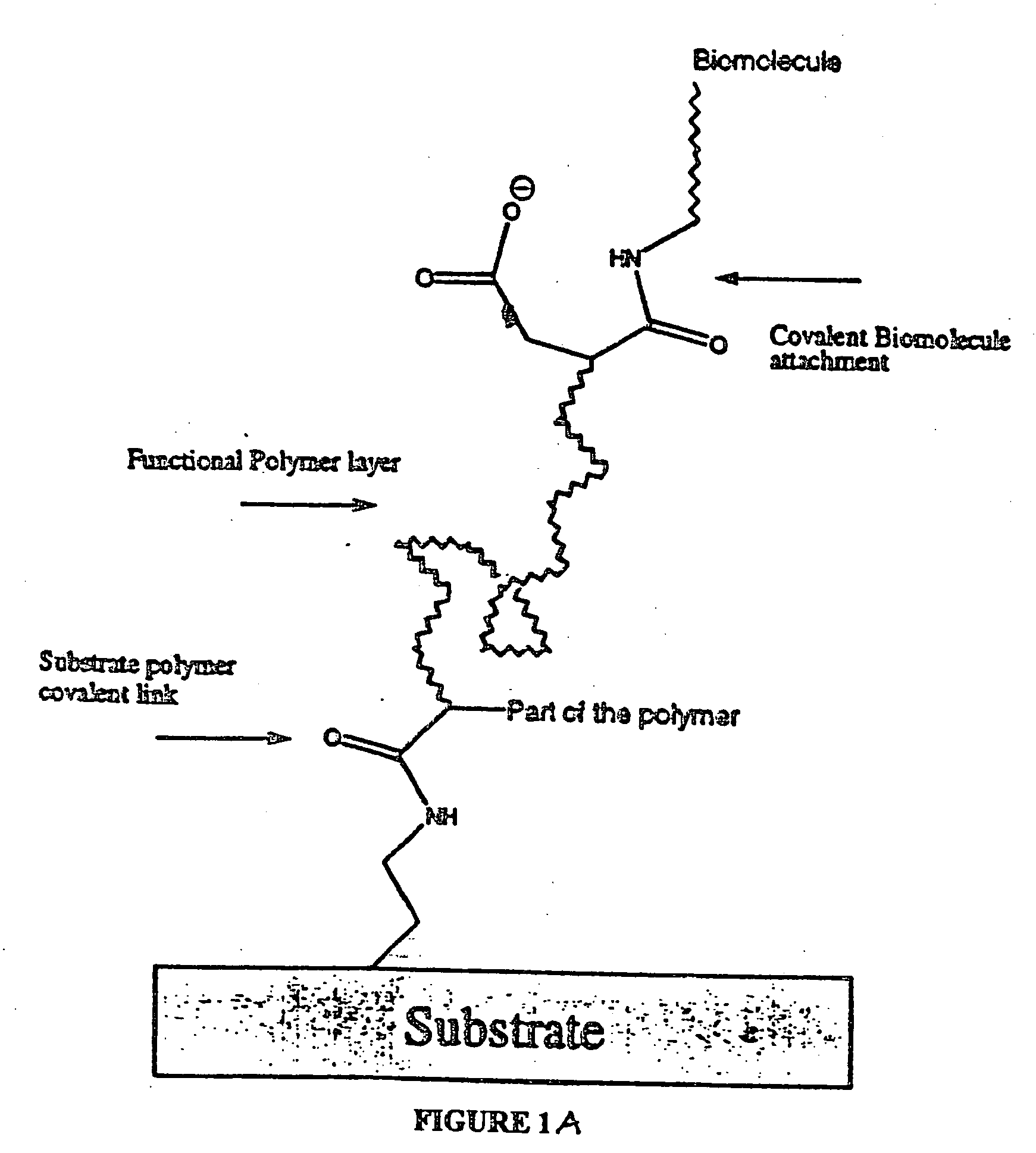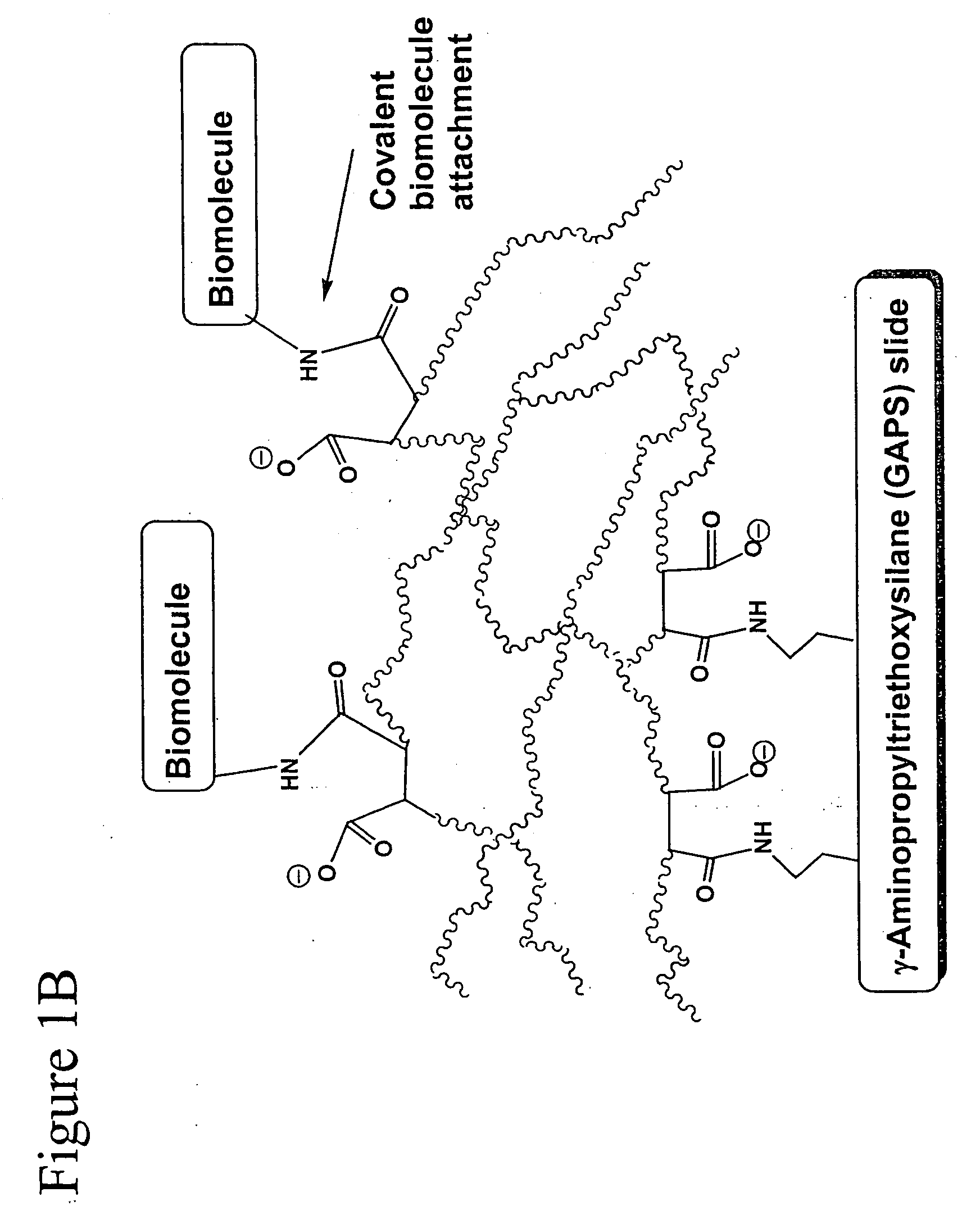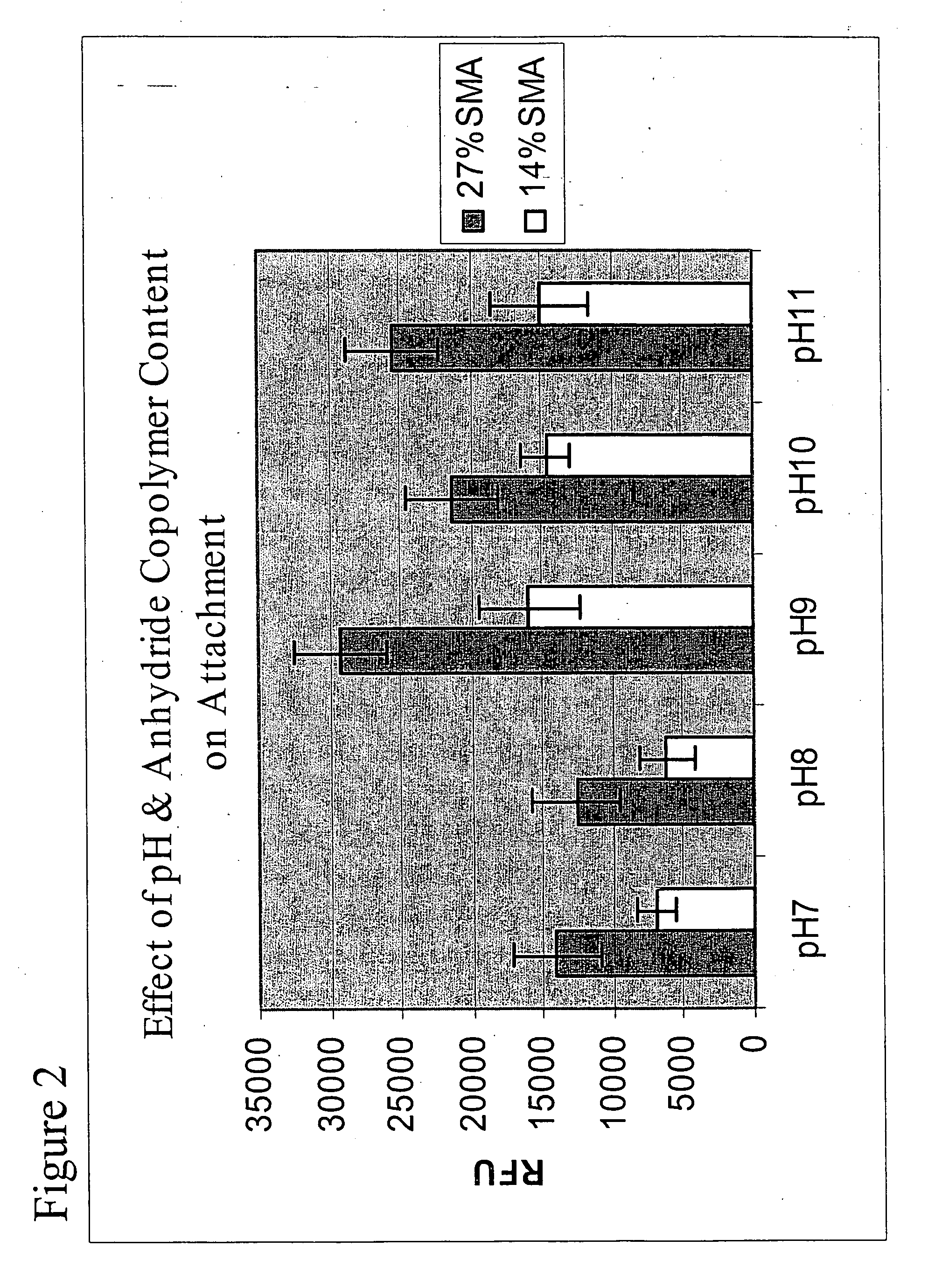Polymer-coated substrates for binding biological molecules
a technology of biological molecules and substrates, applied in the field of polymer-coated substrates for binding biological molecules, can solve the problems of reducing the effectiveness of assays, motorola slides, and a relatively slow reaction-kinetic rate, and achieve the effect of reducing the non-specific binding of biomolecules
- Summary
- Abstract
- Description
- Claims
- Application Information
AI Technical Summary
Benefits of technology
Problems solved by technology
Method used
Image
Examples
example 1
A. Preparation of Poly[Styrene-co-Maleic Anhydride] (SMA) Coated Slides
[0041] Glass slides coated with γ-aminopropyl trimethoxy silane (GAPS), were spin coated with a 5% wt / v poly[styrene-co-maleic anhydride] in dry toluene at about 2000 RPS for about 20 seconds. The slides were dried in a vacuum oven at 100° C. for 1 hour. The slides were then kept in a desiccator until needed. The polymer was also coated onto cleaned plain glass slides for comparison.
B. Attachment of Primary-Amine-Modified Oligonucleotides and Hybridization
[0042] Using synthetic 3′-amine-modified oligonucleotides of 18mer and 24mer lengths, we tested the surface attachment capabilities. Each of these oligonucleotides had Watson-Crick complementary strands labeled with Cy5 dye. The 18mer had a sequence: 5′-Cy3-ACCACCAAGCGAAACATC-C6-Amine-3′, with its a complementary oligonucleotide sequence having: 5′-Cy5-ATGTTTCGCTTGGTGGTC-3′. The 24mer has a sequence: 5′-(Cy3)CACAGGGGAGGTGATAGCATTGCT(Amine)-3′, with its comp...
example 2
Alternate Preparation of Maleic Anhydride Presenting Substrates
[0049] Preparation of Surfaces: As shown in FIG. 5, to produce self-assembled monolayers (SAMs), gold-coated substrates were soaked for 1-2 hours in ethanolic solutions (1 mM or 2 mM) of 11-mercaptoundecylamine. These substrates were then rinsed with ethanol and dried. The conjugation of polymers to the substrate was accomplished by immersion in solutions of the polymer in DMSO (10 mg / mL) containing ˜0.1% triethylamine for 1 hr. The substrates were then rinsed with DMSO, ethanol, and dried.
[0050] Alternatively, polymers can be coupled to the surface by immersing the substrate for 1 hour in a 10 mg / mL solution of the polymer in methyl-ethyl-ketone containing 0.1% triethylamine. The substrates are then rinsed with ethanol and distilled water and dried. (The polymer poly(maleic anhydride-alt-methyl vinyl ether) is commercially available from Aldrich; poly(tri(ethylene glycol methyl vinyl ether)-alt-maleic anhydride) was ...
example 3
Electrostatic Blocking of Surfaces Modified with Anhydride-Containing Polymers
[0059] According to the invention, we employ electrostatic blocking agents on anhydride-modified surfaces. Diethylaminethyl (DEAE) dextran is particularly effective in reducing the non-specific binding of proteins to surfaces modified with poly(maleic anhydride-alt-methyl vinyl ether) or SMA.
[0060] To demonstrate the use of DEAE dextran as an electrostatic blocking agent, chemically modified gold surfaces were prepared containing a thin (˜1.5 nm) layer of poly(maleic anhydride-alt-methyl vinyl ether) attached to a self-assembled monolayer of 11-mercaptoundecylamine (MUAM). After being docked into the Biacore 2000 surface plasmon resonance (SPR) instrument and equilibrated with buffer, these surfaces were reacted with ethanolamine, and then blocked for 2 minutes with either i) ethanolamine; ii) DEAE dextran, a positively charged dextran; iii) carboxymethyl dextran, a negatively charged dextran; or iv) na...
PUM
| Property | Measurement | Unit |
|---|---|---|
| thickness | aaaaa | aaaaa |
| thickness | aaaaa | aaaaa |
| pH | aaaaa | aaaaa |
Abstract
Description
Claims
Application Information
 Login to View More
Login to View More - R&D
- Intellectual Property
- Life Sciences
- Materials
- Tech Scout
- Unparalleled Data Quality
- Higher Quality Content
- 60% Fewer Hallucinations
Browse by: Latest US Patents, China's latest patents, Technical Efficacy Thesaurus, Application Domain, Technology Topic, Popular Technical Reports.
© 2025 PatSnap. All rights reserved.Legal|Privacy policy|Modern Slavery Act Transparency Statement|Sitemap|About US| Contact US: help@patsnap.com



